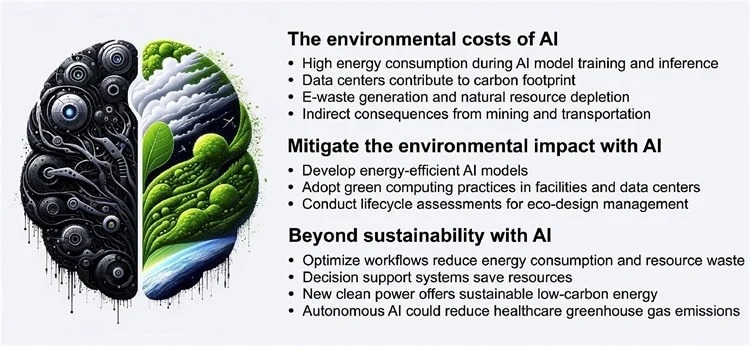Ensuring sustainable and responsible use of AI in healthcare

The integration of artificial intelligence (AI) has significantly transformed healthcare systems, offering new possibilities and efficiencies. However, a recent paper published in the journal Diagnostic and Interventional Imaging highlights the crucial steps needed to ensure AI is used responsibly and sustainably in healthcare.
Background
AI has become a key component in healthcare, particularly in diagnostic imaging, radiation therapy, interventional radiology, and nuclear medicine. Deep learning (DL), a subset of AI, is widely utilized in these areas. DL models can independently learn from data, enhancing diagnostic accuracy, therapeutic outcomes, and overall efficiency in patient care.
However, the significant computational power required by AI platforms also leads to a substantial carbon footprint, which can exacerbate climate change and harm the environment.
With climate change being an urgent global issue, mitigating its impact is a top priority. This review examines the role of AI in healthcare within the broader context of climate change.
Benefits of AI in Healthcare
AI offers numerous advantages in healthcare, including streamlined workflows, faster processes, and reduced resource waste. It facilitates the broader adoption of telemedicine, improving patient identification for imaging, reducing wait times, and cutting down on unnecessary resource use like energy and materials.
AI also enhances clinicians’ diagnostic abilities, minimizing the need for repeat examinations. Coupled with more efficient workflows, this can promote virtual care, reduce patient travel, and subsequently lower greenhouse gas emissions.
Energy Costs of AI in Healthcare
Despite its benefits, AI in healthcare is energy-intensive. Currently, healthcare applications account for over 4% of AI usage, relying on large datasets, complex algorithms, and frequent model updates. A single large AI model can consume as much energy as five cars over their entire lifespan.
AI depends on data centers equipped with servers, cooling systems, and networking platforms, all of which must operate continuously in controlled environments. This contributes to about 1% of global power consumption.
Moreover, the healthcare sector generates significant electronic waste due to the constant need for hardware upgrades. This waste, often containing toxic materials like lead, cadmium, and mercury, poses environmental risks.
The demand for natural resources, including rare earth elements, further impacts biodiversity by leading to habitat destruction. The logistics associated with the AI supply chain also contribute indirectly to environmental degradation.
Mitigation Strategies
To address these challenges, several solutions have been proposed. Increasing the energy efficiency of AI models through techniques like quantization and pruning, along with improved infrastructure design, can help reduce the environmental impact. Revamping hardware and software concepts and utilizing efficient power management strategies, such as dynamic voltage and frequency scaling, are also essential.
Incorporating renewable energy sources into AI operations can further reduce energy consumption. For example, AI-driven advancements in nuclear fusion reactor design could eventually make this a viable power source for AI in healthcare.
A comprehensive lifecycle evaluation of AI’s environmental impact is necessary to identify opportunities for reducing the carbon footprint throughout the process. Research indicates that autonomous AI could potentially reduce greenhouse gas emissions in healthcare by up to 80%.
Importance of Stakeholder Collaboration
Achieving sustainability in AI for healthcare will require robust policies and government initiatives, supported by collaboration among stakeholders at every stage. Regional and international cooperation, along with knowledge sharing, is critical to establishing sustainable practices as the norm.
Best practices for sustainable AI in healthcare include designing eco-friendly frameworks, conducting lifecycle assessments of AI systems, ensuring responsible data use, and implementing regulatory oversight. This review aims to guide future research and identify areas where improved practices are needed to align AI in healthcare with environmental sustainability goals.
